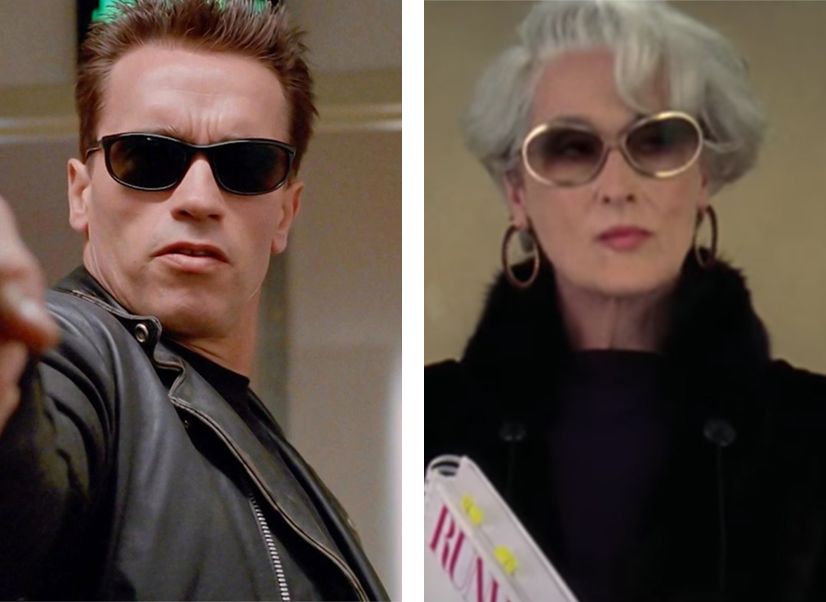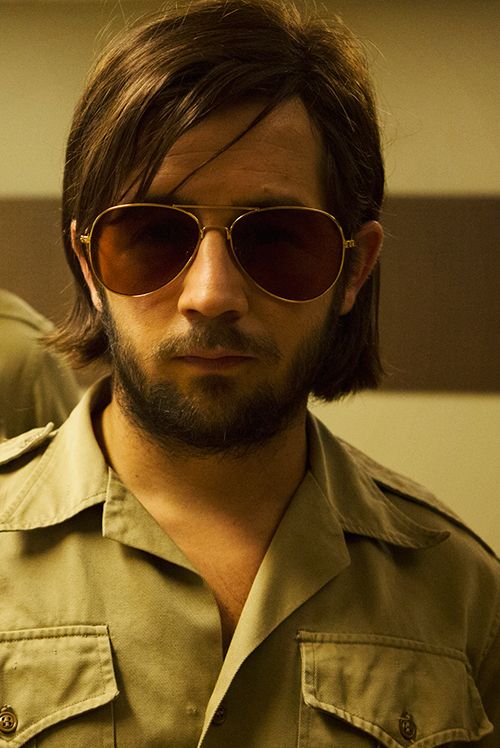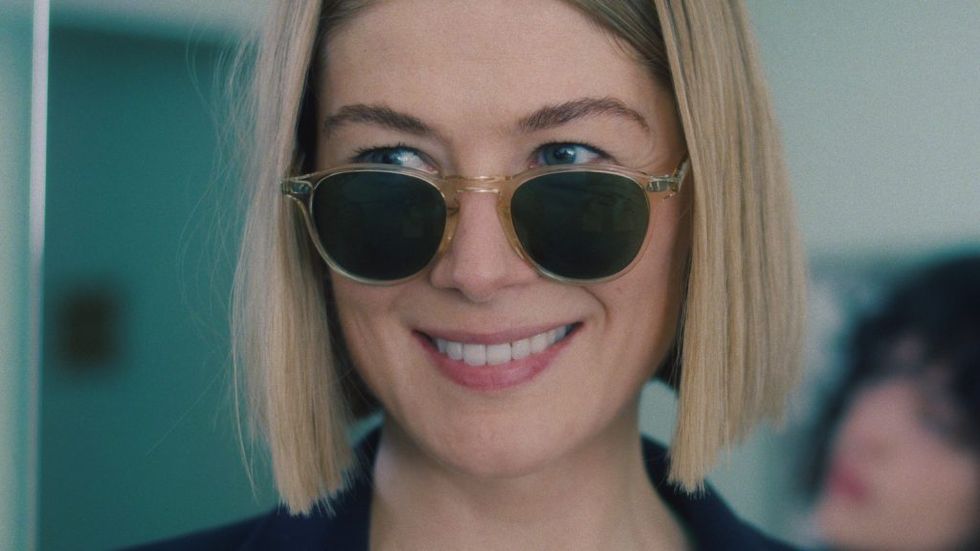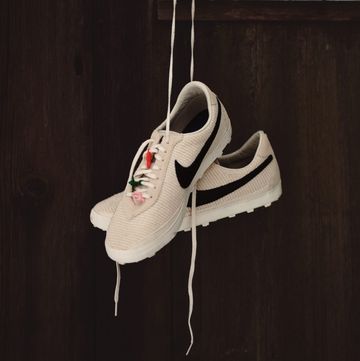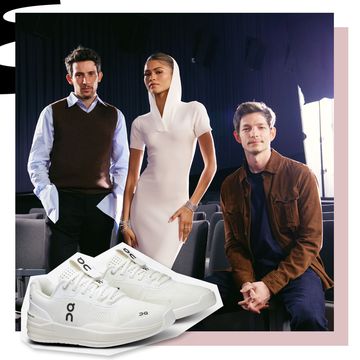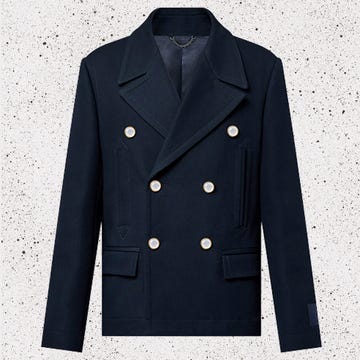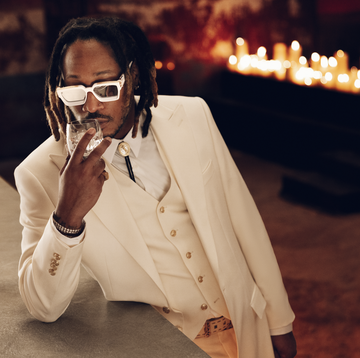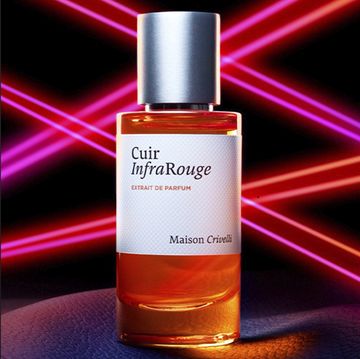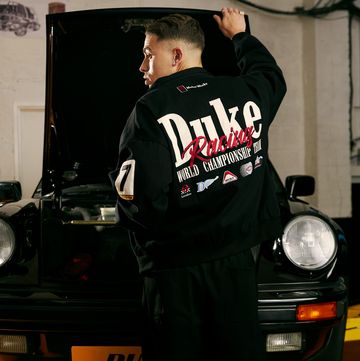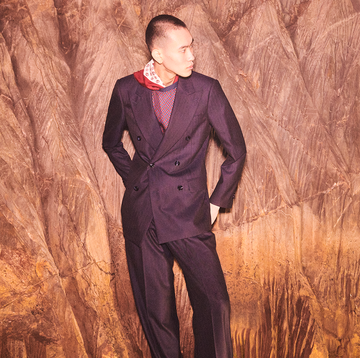In I Care a Lot’s pivotal scene, Rosamund Pike's Marla appears at the house of a spinster who is spending her twilight years either indoors, or at aquarobics. Pike is reassuring, smiling, and hiding behind a pair of sunglasses. Her performance, which earned Pike a Golden Globe, is rooted in late capitalist, elbows-out evil. Because, for this bobcutted entrepreneur, the elderly are prey. Her organisation uses bogus health records to convince the courts that perfectly healthy seniors should be placed into her care, for their own safety. Their assets are subsequently stripped, and sold off at a profit to pay for a complicit care home (and Marla’s toy-like townhouse).
Pike is costumed perfectly: a go-getter who uses primary-coloured pantsuits to mask the dark side of #girlboss culture. In her world, “playing fair is a joke invented by rich people to keep the rest of us poor.” Marla cares a lot indeed – just not all that much for her wards.
When this poacher arrives on the doorstep of unsuspecting grandmas, she comes camouflaged: daffodil suits, and yes, that milky pair of Garret Leight sunglasses. They are worn frequently throughout I Care a Lot, and slip down Marla’s face in her most heinous moments. “In the scene where she goes to the house and looks through the window, it was sort of a little bit of a disguise for her at times,” says costume designer Deborah Newhall over a Zoom call. “Those glasses in particular could do two things: they were friendly-looking, and she looks like a nice lady, but then you see those glasses being worn when she’s in a very fierce mood when the sparks are flying off her. They’re a style that do a double duty: they can be friendly, but they also have an edge.”
Some critics have drawn a line from Pike’s performance to her turn in 2014’s Gone Girl. There are many similarities: the coldness, the steely narration, the battle plans so byzantine and iniquitous that they’d put a Soviet general to shame. And, like Marla, Gone Girl’s [spoiler alert!] not-quite-gone villain Amy confesses to her plot-shaking crimes from behind large, opaque sunglasses.
In fact, dozens of villains do bad in the same. Pulp Fiction’s Marsellus Wallace runs his criminal empire, poolside, in a pair of discontinued Jean Paul Gaultiers. In Spider-Man’s Maguire-Dunst era, Alfred Molina suited up as Doctor Octopus: a mad scientist mechanically enhanced by robotic tentacles and goggle-like shades. There's A View To A Kill’s Maximillian Zorin and his tinted aviators, of a piece with the pair Tony Montana wears to mask his binges. Albert Wesker in the Resident Evil video games and Kubrick's Dr Strangelove, in his smoked lenses. Leon, for all the born-again virtue, is still a bad man in John Lennons. Meryl Streep's devil wears Prada, and also vintage Versaces (those looking to emulate Ms Priestley can do so in Tom Ford's direct tribute, the Mirandas). Tyler Durden destroys lives in Oliver Peoples. Spring Breakers is defined by men like James Franco in grills and visors. The Terminator. The list goes on.
Goodies also wear sunglasses, although their goodness isn't always clear cut. Tom Cruise's Maverick is as loose a cannon as his call sign implies, and also has a job that involves shooting planes out of the sky with an actual cannon. Danny Zuko is cinema’s godfather of bad boyism in a pair of proto-wraparounds, and he's not exactly a feminist icon. Johnny Depp’s Raoul Duke wore great Ray-Bans, but you wouldn't want to actually spend time with him unless you also had a crippling drug addiction. And James Bond, as we all know, is a war criminal.
All these characters, regardless of their place in cinema's crude Myers-Briggs of goodness, do questionable, if not outright bad, things – and it makes sense that sunglasses have been their uniting accessory. Of course, we can say it’s because shades are inherently cool (they are), and because they add a layer of mystique and enigma to otherwise staid people (they sort of do). But why do they exude this aura?
It might be that, rather than simply convey something about your personality, they can change it. In a 2010 study led by Chen-Bo Zhong at the University of Toronto, a group of 80 volunteers were split into two groups and given either sunglasses or clear spectacles to wear. After subjects were given $6 to split between the group, the findings found the sunglass-wearers to be significantly less generous, giving strangers $1.81 as opposed to the $2.71 total of the clear spectacles group. When Zhong interviewed them afterwards, he found people in sunglasses admitted to a greater sense of anonymity during the experiment.
Sunglasses can make you a bit tighter, then. But do they actually make you meaner? One clue lies in the infamous 1971 Stanford Prison Experiment, which split volunteers into two groups: guards and prisoners. Originally intended to last two weeks, it was halted six days in after those in authority subjected their wards to increasingly abusive behaviour including sleep deprivation, forcible strippings and mental humiliation.
To prepare them for their role, the prison guards were given wooden nightsticks, military fatigues and, interestingly, a pair of mirrored sunglasses. That idea was borrowed from the 1967 prison drama film Cool Hand Luke, according to Philip Zimbardo, the professor behind the experiment, as “[sunglasses] prevented anyone from seeing their eyes or reading their emotions, and thus helped to further promote their anonymity. We were, of course, studying not only the prisoners but also the guards, who found themselves in a new power-laden role." That said, the experiment was a failure scientifically due to its smaller sample size and questionable ethics.
The idea that eyes can give the whole game away is also contested. Lisa Feldman Barrett, a neuroscientist and professor of psychology at Boston’s Northeastern University, has conducted extensive research into the communication of emotion – some of which can be found in her self-described "neuroscience beach read", Seven and a Half Lessons About the Brain. Rather than believing in a common understanding of a particular emotion, her research instead points to more localised interpretations that differ by culture, and by individual. Depending on where you are and who you're with, a frown doesn’t always need to be turned upside down.
“There is no emotion category that is universal in humans,” she tells me over Zoom. “For many of the emotions that cross cultures, like sadness or anger, there’s no universal expression that everyone makes and everyone recognises. In fact, if we measure a face in different situations where it is angry, one wouldn’t just always scowl. The data shows that when you measure people in big urban cultures, people scowl when they’re angry about 30 per cent of the time. But 70 per cent of the time, that means you’re doing something else meaningful with your face when angered.”
It makes sense. As Barrett asks: "When was the last time someone won an Academy Award for scowling when they’re angry?” Humans have a vast catalogue of expressions and emotions that cause them. “When you go to indigenous cultures, emotions and the way they are expressed are very different to ours. The idea of reading emotion is just the wrong metaphor; they’re not encoded in the face to be read like words on a page.”
A villain in sunglasses, then, is the same as anyone else in sunglasses: just a person. Shades are arguably not the great obscurers people assume them to be. Malevolence cannot be detected in someone’s stare alone. “Do [sunglasses] make it harder to make inferences in general? Yes, because you’re removing information,” says Barrett. “But when you see a person’s whole face, does that make it easier to detect that they mean you harm? No, it doesn’t.”
That said, the eyes play another key role; a communicative one that is less exhibitive, and more interactive. “It’s not just that people wear glasses when they’re about to do something heinous, like in I Care a Lot; people wear sunglasses when they want some anonymity, or some distance,” says Barrett. “I don’t mean anonymity in that people won’t know who you are – of course they will – but if you want interpersonal distance, you put on a pair of sunglasses and they can’t look in your eyes.” Which, according to Barrett’s extensive research, is an important part of communication. “There is something special about eyes. It’s how we regulate each other’s attention.”
Barrett goes on to use the example of infant-parent communication to highlight how important eye contact is. As young children have no understanding of the name of things, a parent will say the name of a particular item within immediate surroundings, clearly directing their eye contact from that thing, to the child, to the thing again, so the baby can understand the correct label and knows to look too. What’s more, if two strangers are conversing in a meeting room and a fire alarm goes off, two things may happen. If an individual familiar with these surroundings looks to the door, the other person will do the same. If they carry on as normal, the other person will follow their lead. Eyes then, aren’t so much the windows to the soul than they are its indicators.
Marla's sunglasses aren’t shutters to avoid detection. They’re worn as a form of psychological PPE, to “keep someone at a social distance – or, actually, affective distance,” says Barrett. Helpful, especially when you’re swindling old people out of their savings (or at moments when someone is to blow up buildings, or about to pull the trigger on a mass shootout in the name of world saving). “Eyes are tools that we use to connect with one another in meaningful ways,” says Barrett. “The story here is that if you want psychological distance from someone, you put your sunglasses on.”
Of course, the majority of people in sunglasses are good people. You’re fine. But the wearing of them, in cinema at least, has become a marker of malevolence because cinema has made it so – a “social reality” that successive films have created. “When Rosamund Pike wears those glasses, she’s signalling to the viewer ‘I’m dangerous’, so it’s used as a sign,” says Barrett. “Just as I’m wearing a ring on my left hand on my third finger to show I’m married, it has meaning that we’ve imposed upon it in social reality, and we agree on that meaning. That’s how little pieces of paper become money. It’s the same thing with sunglasses in film.”
Indeed, our response to fictional characters in sunglasses contrasts with our response to real people in sunglasses; they’re not outwardly dangerous, and they don’t peer through the windows of old vulnerable women to clanging synth music. Marla’s appearance in sunglasses follows a grand tradition because “somewhere, someone decided to impose that function, and it worked.”
Sunglasses then aren’t so much a disguise. Nor do they throw shade on the motives and malevolence of cinema’s worst malefactors. Just as in real life, the victims in the world of I Care a Lot are unable to distinguish her as friend or foe because people are complex and their motives are inscrutable. But in fiction and reality, sunglasses share one common power: they allow Marla to step back, and lose contact; the drop of a shark’s protective second eyelid as it approaches the doorway of a defenceless old lady.
Like this article? Sign up to our newsletter to get more delivered straight to your inbox
Need some positivity right now? Subscribe to Esquire now for a hit of style, fitness, culture and advice from the experts


